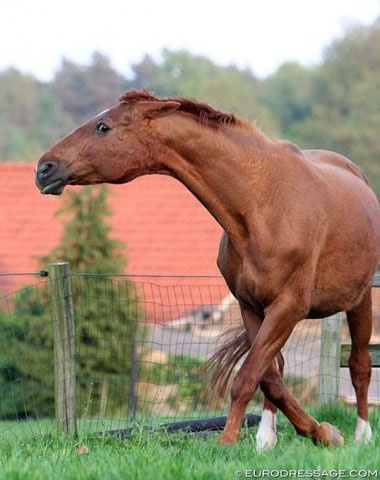
Professor Paul McGreevy has received a Fulbright Scholarship to undertake research at Colorado University promoting the Equine Behaviour Assessment Research Questionnaire (E-BARQ) project.
McGreev is a riding instructor, veterinarian and ethologist, teaching at the University of Sydney. He is also a co-founder and honorary fellow of the International Society for Equitation Science.
The E-BARQ Project
Since ancient times, horse behaviour, and the bond between horses and humans, has been a source of intrigue and fascination.
The horse-lore that has accumulated over the centuries is a rich mix of both useful practice (approaching horses from their left side, making them slightly less reactive) and unsubstantiated myth, such as the one that chestnut horses are especially difficult to deal with.
This is why Paul and his team at the University of Sydney have launched the Equine Behavior Assessment and Research Questionnaire (E-BARQ), a global database of horse behaviour. The study explores how horse training and management interact with behaviour. It will reveal invaluable information on how our training and management affects behaviour and how, in turn, behaviour affects horse welfare. Beyond the immediate and direct research outcomes, E-BARQ also offers great benefits to horse owners, riders and trainers.
On completion of the questionnaire, contributors receive a graph that compares their horse with 1000’s of other horses across various attributes. They also receive a private dashboard where they can log each of their horses and view their E-BARQ results. This innovative tool is completely free of charge.
Horse owners can upload photographs to a custom-built app, recording their horse’s progress in training over time. For the first time, they’ll also be able to compare their horse’s behaviour with that of other horses. The “share-&-compare” graphs will reveal attributes such as trainability, rideability, handling, compliance, boldness, and human social confidence.
E-BARQ’s main benefits:
1) E-BARQ is open to all horse owners/handlers, regardless of their horses’ breed, height or age, and provides users with a free dashboard to store their horses’ results and track their progress.
2) E-BARQ participants can compare their horses’ behaviour to others around the world, giving them a useful benchmark.
3) E-BARQ participants can monitor their horse’s progress over time as they can return to their E-BARQ dashboard every 6 months and re-take the questionnaire, updating their scores.
4) E-BARQ participants will obtain a new insight into which areas their horses are performing well in and where they may require help.
5) E-BARQ participants can monitor the consequences of different training methods over time, so E- BARQ data can be a powerful tool for advancing horse welfare. E-BARQ data will also inform evidence- based judgements on the ethics and sustainability of horse sports.
6) E-BARQ will reveal the true impact of ancient traditions and modern trends. This can be used by everyone, from the general riding public to equine scientists and veterinarians.
This project builds on a similar project for dogs (C-BARQ), which has collected information on over 85,000 dogs and been used in more than 70 research studies that have revealed behavioural differences that relate to head and body shape and the astonishing effect of de-sexing on behaviour. Without doubt, C-BARQ has revolutionised our understanding of dog behaviour.
After 8 years of planning, we are very excited about E-BARQ. It is a not-for-profit project that allows the global horse-folk community to donate their observational data to the University of Sydney and gain useful benefits in return.
Access E-BARQ
You can access E-BARQ here: https://e-barq.com/
The questionnaire and app will expose how training and management influences horse behaviour, and vice versa. They will reveal how breeds differ in responses and illuminate breed-typical personality types, how male and female horses differ, how horses used in different disciplines (such as show- jumping versus dressage) differ in their behaviour and how horse behaviour changes with maturation and training.
Information provided by E-BARQ could potentially help buyers identify warning signs of dangerous behaviours and make more informed choices. E-BARQ also holds great promise in tracking, welfare monitoring, promoting early intervention and the education of new owners in the areas of horse rescue and re-homing.
Related Links
The Use of Nosebands in Equitation and the Merits of an FEI Equestrian Welfare and Safety Committee
Cribbing and Weaving, Stereotypies of Bored Horses
Whipping of Race Horses is Influenced by Jockey's Experience